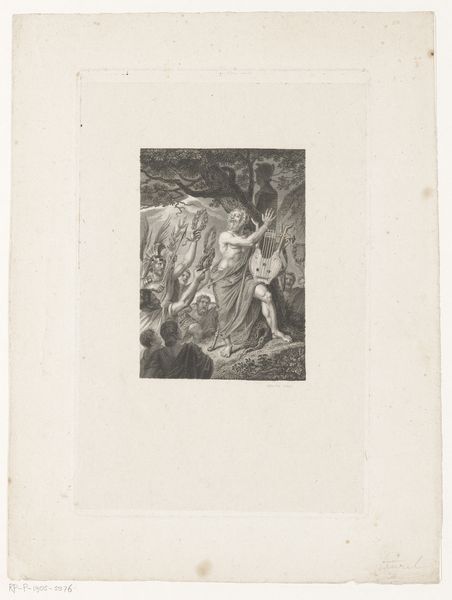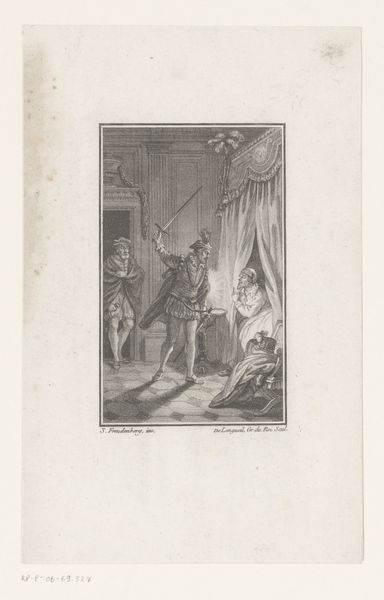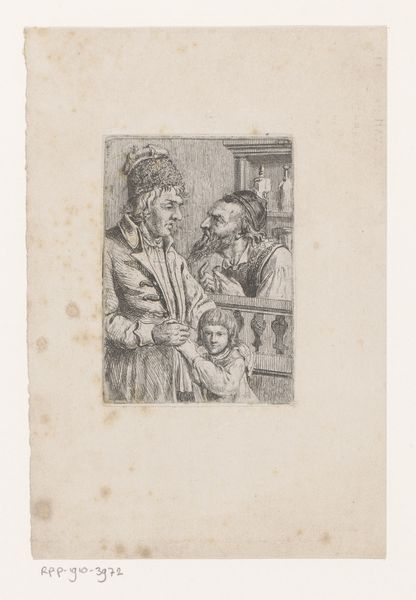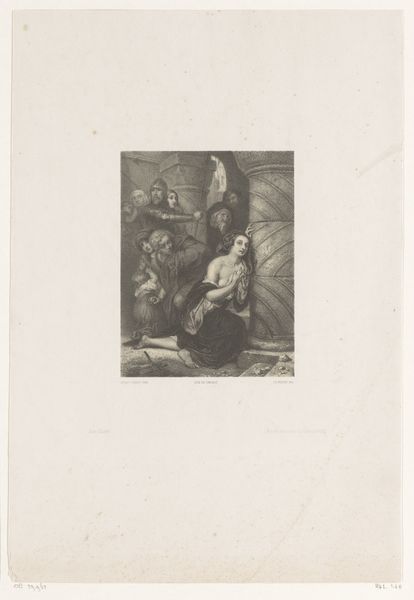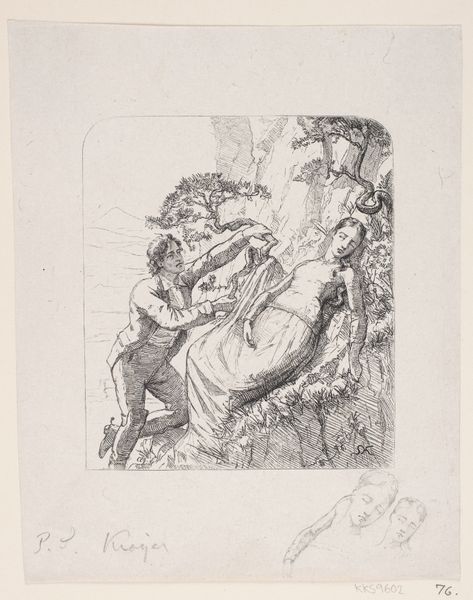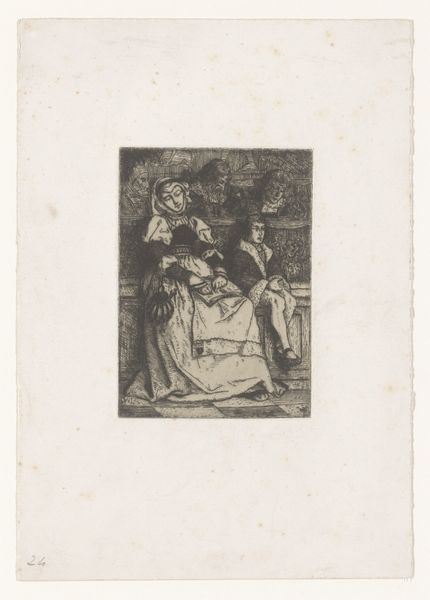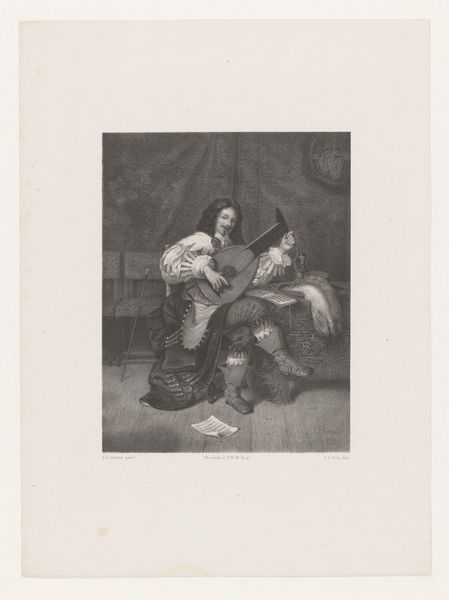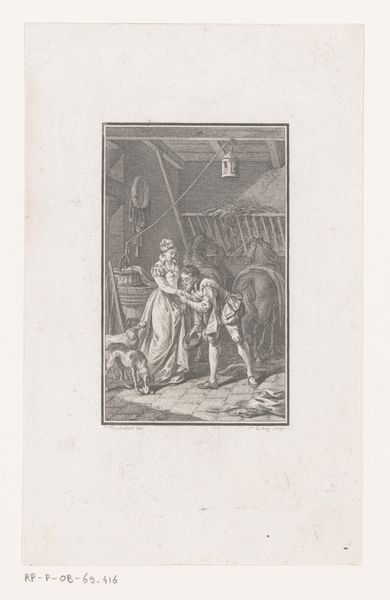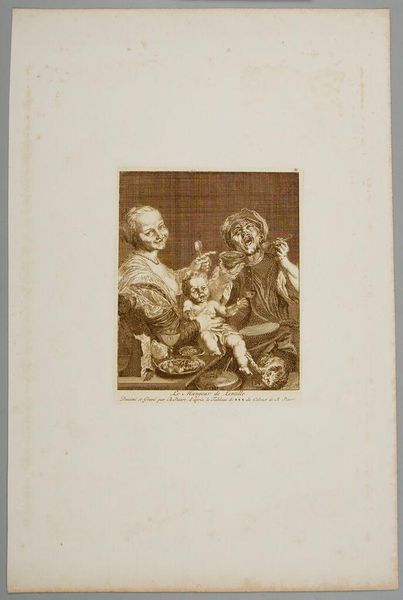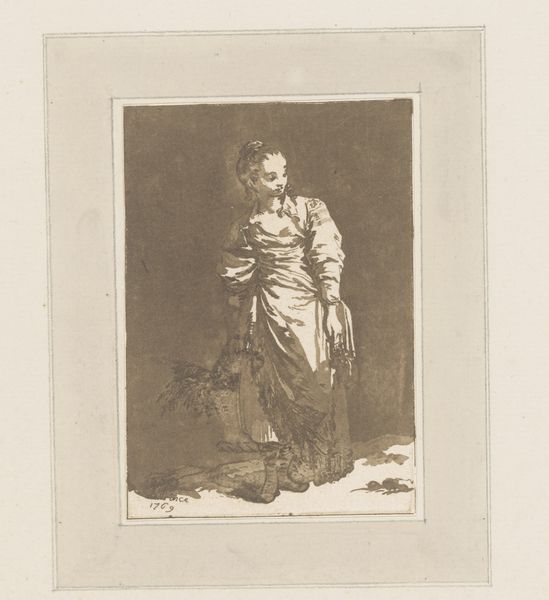
print, etching
#
portrait
# print
#
etching
#
genre-painting
#
realism
Dimensions: height 290 mm, width 238 mm
Copyright: Rijks Museum: Open Domain
Curator: Welcome. Today, we’ll be discussing Adam von Bartsch’s 1782 etching, “Oude vrouw achter een spinnewiel,” housed here at the Rijksmuseum. Editor: My first impression is one of stark loneliness. The composition emphasizes the woman's isolation, cloaked as she is by darkness, laboring in what appears to be a very still, silent world. Curator: The starkness arises from the very limited tonal range. Observe how Bartsch uses dense cross-hatching to create deep shadows that contrast dramatically with the paper’s untouched white surface, thus highlighting form and texture. The figure's dress, the spinning wheel – each rendered with precise detail. Editor: Precisely! Bartsch situates her as an archetypal image of impoverished women's domestic labor at that time. Notice how her aging, almost masculine, features are on display? It seems to reject the contemporary obsession with youth and beauty in portraiture and instead centers on themes of class and hardship. Curator: To that point, the sharp etching technique certainly heightens the overall impression of realism. Bartsch masterfully uses the burin to create a network of fine lines to suggest the play of light and shadow on her wrinkled skin and worn garments, resulting in great texture. Editor: It almost feels subversive, perhaps even accusatory, that Bartsch represents a genre scene this way—inverting the conventions of Dutch Golden Age art. Consider what this print says about the socio-economic realities masked by genre painting's prettified narratives. It makes one consider women’s work in society. Curator: A compelling point. The lines guide our gaze to key structural elements – how her hand clutches a part of the wheel, how her clothes hang loosely. Editor: Bartsch truly disrupts idealized depictions by showing a slice of real-life, offering viewers the chance to reassess gendered labor in a way that most 18th-century art shied away from. It provokes introspection beyond formal appreciation. Curator: It offers a fascinating confluence of technique and implied narrative, which provides us much to think about as we move onward. Editor: Yes, a deeply reflective encounter; the artistry and its layered socio-political implications definitely resonate.
Comments
No comments
Be the first to comment and join the conversation on the ultimate creative platform.
